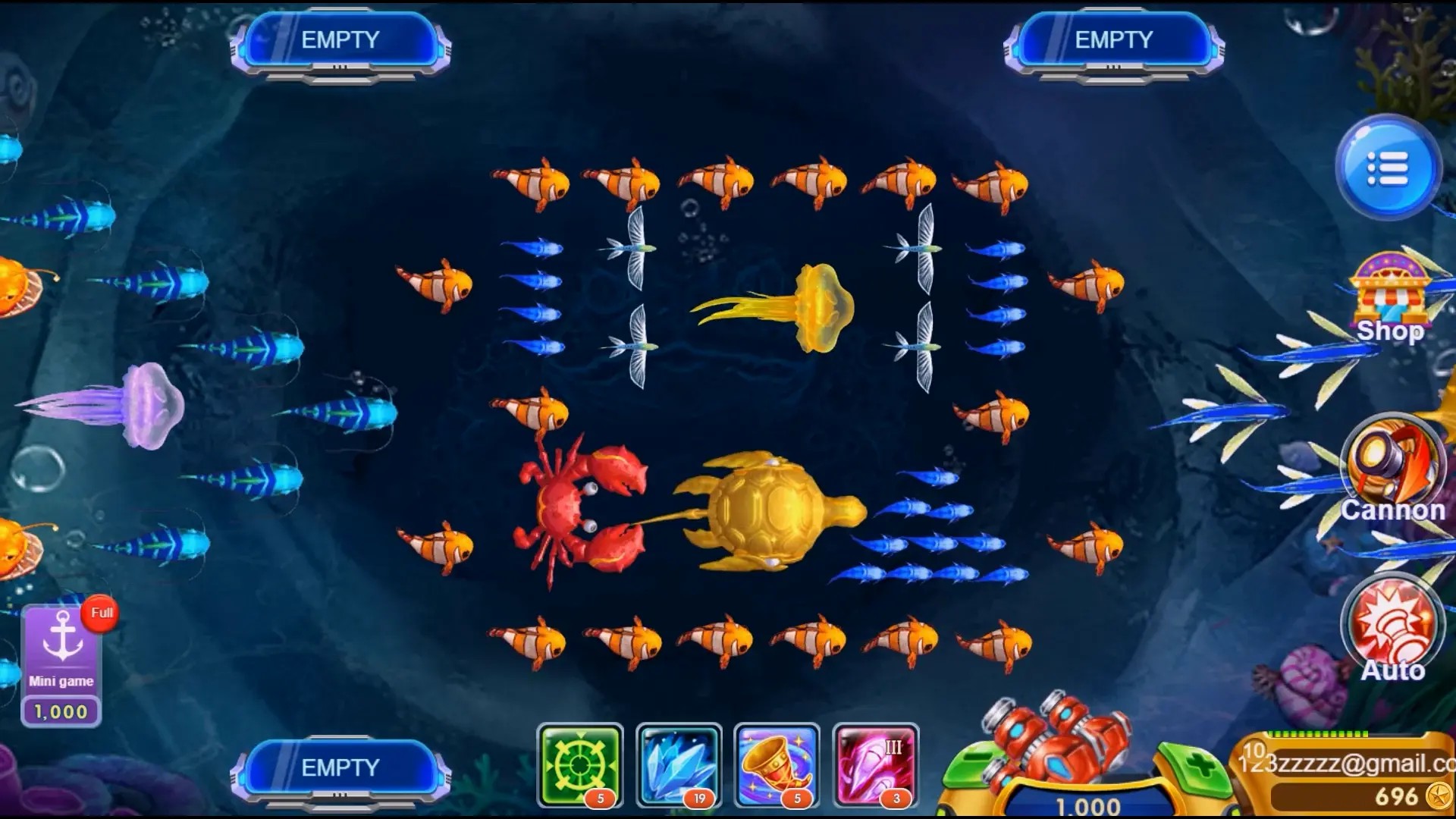When MMORPGs Collide with Building Games
You’ve seen it a hundred times—massive fantasy worlds where dragons breathe fire over ancient castles, guilds clash in thunderous battles, and epic loot drops from raid bosses. But what if you could build that castle? Not just loot it. Build it, brick by digital brick. This is the new frontier: MMORPG meets building games. And India’s gaming scene is waking up to it fast.
Why This Mix Makes Total Sense
Think about it. In traditional MMORPGs like RuneScape or Lineage 2, you’re trapped in someone else’s world. It’s beautiful. But static. You loot, level, quest—but never shape. Building games like Minecraft? Pure sandbox creativity. But lonely. Solo adventures in blocky universes. What if we fused these two DNA strands?
Enter the hybrid experience—shared persistent worlds where you fight, farm, and construct. Not just survival. Civilization. Imagine crafting a fort in the middle of a live PVP zone—then defending it during a seasonal event like The Last War Survival Game Season. That’s the dream.
Beyond Escapism: The Need for Player-Created Worlds
Gamers in Mumbai, Bangalore, and Delhi aren’t just consuming stories. They want to influence them. A 2023 Statista survey found 68% of Indian millennials prefer games where choices affect outcomes. Player agency? Critical.
But here’s the kicker—why stop at dialogue choices or faction allegiance? What about terrain manipulation? Why not let players build cities that evolve based on real clan dynamics? One village burns after betrayal. Another becomes a trade hub because three guild leaders decided to ally. Now that’s storytelling.
Is the Tech Ready? Let’s Look at the Tools
| Feature | Available Now | Future-Ready? |
|---|---|---|
| Dynamic terrain editing | Yes (in select titles) | Scaling possible |
| Persistent player builds | Limited (Ark, Fallout 76) | Nearly there |
| Cross-server structure sharing | No | In dev (unofficial servers) |
| AI-driven narrative shifts based on structures | No | Distant |
Tools like Unreal Engine 5 and Unity 6 give devs massive flexibility. Procedural destruction, Nanite meshes, voxel-based editing. We have the horsepower. The gap? Server cost. Persistent structures eat memory. But India’s expanding 5G networks? That’s the game changer. Soon, real-time world edits across lakhs of players won’t be sci-fi.
The Role of Community in Shaping Realities
- Clan-built cities rising after raids
- Economy driven by craftable trade hubs
- Social drama over zoning disputes (yes, really)
- Religious sects based around monument design
It sounds nuts. But check the player lore of Albion Online. No NPCs run the economy—players do. Entire regions specialize in gear because a guild controls all anvil towers. Now scale that up. Let players decide not just who controls the mine—but how the landscape looks around it.
Navigating the Risks: Chaos vs. Control
Open-world construction is like giving every citizen a flamethrower and a blueprint book. Yes, you get brilliance. You also get… idiocy. Or griefing.
What happens when someone builds a giant penis tower in the center of New Varanasi (in-game, of course)? How do moderators respond? Do we allow democratic demolition voting? These are real questions game devs now wrestle with. And India’s vibrant but volatile online spaces know this tension well—see any WhatsApp gaming group go sideways over a raid invite.
Balance is delicate. Too strict? Kills creativity. Too loose? Server becomes a digital trash fire. The answer? Zoned creativity. Safe towns. Chaos frontiers. Player-elected building councils. Maybe even seasonal building contests.
Debunking the "sex story mode games" Misconception
A quick note before we move on. You’ve probably heard rumors—whispers that mixing player-driven construction with open MMORPGs leads to adult-themed zones. Some forums even dub these as “sex story mode games". Is it happening? Maybe. Will it dominate?
No. Not even close.
Yes. There are sandbox servers in games like Avakin Life where… uh, let’s say “creativity" leans NSFW. But the mainstream won’t follow. Developers want scalable monetization. Advertisers want clean spaces. And most players? They just want forts, farms, and faction pride. The fringe exists. It always will. But it won’t shape the mainstream wave.
India's Unique Advantage in This Shift
Let’s talk local flavor. Indian gamers are different. You know it. I know it. Unlike passive Western consumption patterns, Indian youth engage differently. More social. More expressive. More chaotic—and brilliantly adaptive.
We’ve got 500 million mobile users. A growing PC base. And a deep cultural link to storytelling—from epics like Mahabharata to Bollywood sagas that run 30 episodes long. So when Indians enter a virtual world? They don’t just play.
They narrate.
And when they start building in these MMORPG spaces? Watch. The Ramayana-inspired stronghold. The temple fortress defended for three game-months. The bazaar where clans trade mythril spice. This isn’t speculation. It’s inevitable.
Seasonal Events That Could Define the Genre
Now, imagine a limited-time event: The Last War Survival Game Season. A doomsday mode. Resources vanish. Terrain collapses. Players have 90 days to survive—and build shelters. Winners? Their fort becomes part of the official map.
This type of event isn’t fantasy.
- Fortnite did seasonal shifts.
- Destiny 2 runs campaign-based closures.
- Mineplex has hosted build-to-survive challenges.
Merge that urgency with full RPG mechanics—skills, magic, crafting—and you’ve got adrenaline with consequence. No respawn cities. No default spawn points. Your survival is literally where you built it.
Top Games Blurring the Line Right Now
We’re not fully there—no AAA title perfectly fuses true MMORPG depth with full-building freedom—but some are close.
| Game | MMORPG Level? | Building Freedom? | Live Season Mode? |
|---|---|---|---|
| Albion Online | High | Medium (farms, portals) | Limited (siege seasons) |
| Corepunk | Mid | High (terrain tools) | Planned |
| PALIA (Krafton) | Medium | High (home & shop build) | No |
| Nox Refortress (Indie Dev) | Low (early access) | Very High | Testing in beta |
PALIA is especially interesting—a peaceful MMO where your house affects quests. Not PVP, sure. But shows direction. And small Indian studios are now prototyping something wilder: games where your constructed city changes weather patterns based on architecture. Yes, really.
Key Points to Remember
→ Indian gamers are ideal drivers due to narrative culture and connectivity growth
→ Technology is almost there—5G, edge servers, and better sync tools
“Sex story mode games" are overblown—they’re fringe content
The real future is seasonal build battles—like The Last War Survival Game Season
Existing titles are inching toward this—watch indie dev scenes closely
What Comes Next?
Expect the first fully integrated title by 2026. Funded out of Seoul, built with Delhi backend teams, playtested in Bangalore. The model? Player-built capitals. Guild-owned islands. Season-driven collapses and rebirths.
Will someone try a sex-themed zone server? Sure. But that server dies. Boring. The real hype? When 5,000 players team up to rebuild a city after the final raid. When a kid in Pune builds a monument that’s later taught in-game history. When the map isn’t designed by devs. But by us.
That’s the promise.
Building isn’t just crafting—it’s legacy. And in MMORPGs? Legacy is everything.
Conclusion
The future of online gaming isn't just bigger dragons or shinier armor. It's about control. About shaping the world with your choices—not just your click speed. MMORPGs are waking up to player-driven construction, and building games are learning to scale socially.
In India, with our chaotic creativity and love for drama (digital or otherwise), this fusion isn't just welcome. It's natural. Whether through official modes or grassroots servers like rumored “The Last War Survival Game Season", the power shift is clear—players don’t want stories told to them. They want worlds to build on.
The tech? Almost there. The demand? Real. The games fusing MMORPG depth with building games freedom? Not sci-fi. Not fan fiction. Just delayed by server costs and slow updates.
One day, you won’t ask: “Where’s the dungeon?" You’ll ask: “Who built that tower—and can I join them?"
That’s the future. And it’s being laid—one block, one guild, one season—at a time.



